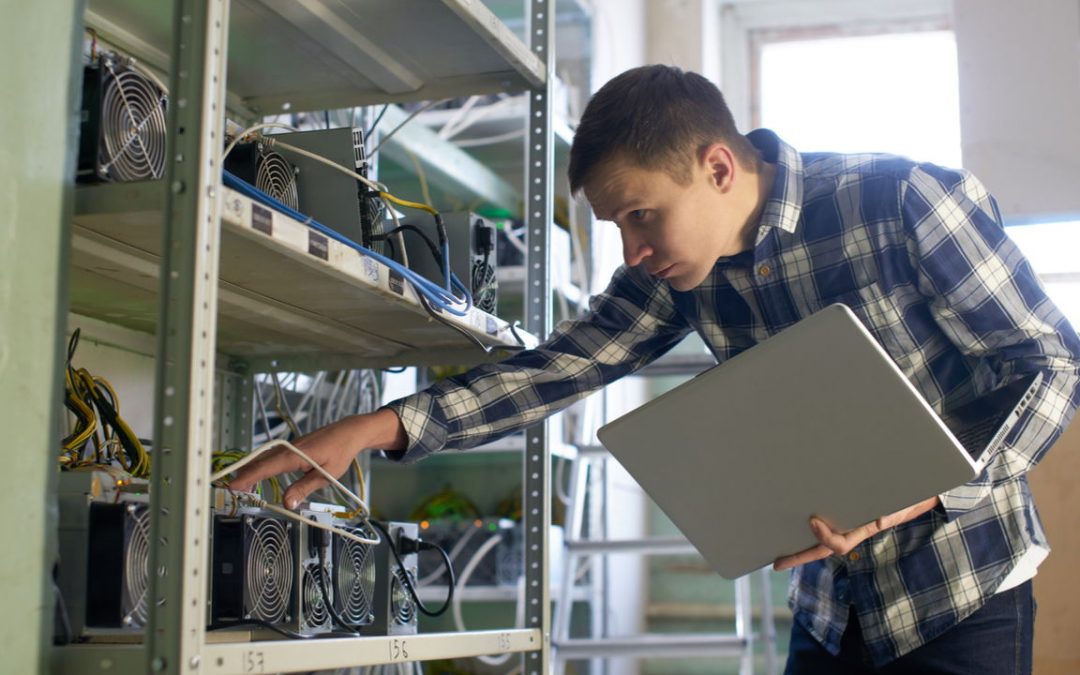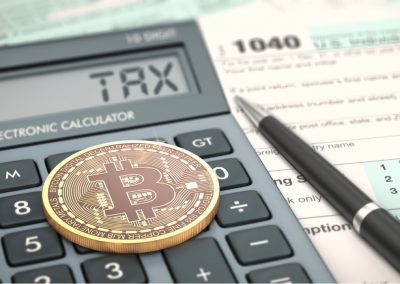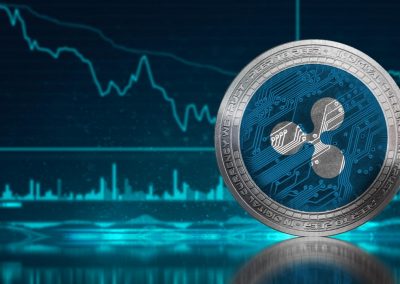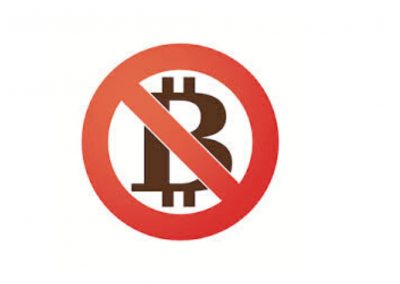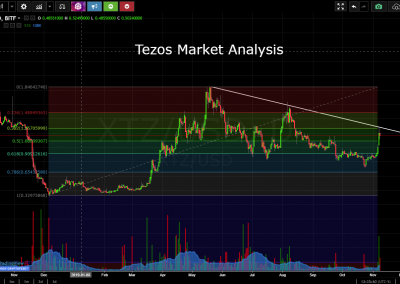Believe it or not, cryptocurrencies aren’t just spawned randomly, even if they are digital. Instead, most of them must go through a user-controlled process called mining. Miners are essential in two ways:
- They verify transactions, ensuring nobody can duplicate coins or create fake orders for a specific cryptocurrency.
- Mining is the only way to put new coins into circulation. Think of it just like “minting” the dollar. Miners aren’t required for cryptocurrencies, but there would never be any new ones without them. Putting new coins into circulation changes the value, and allows more people to invest in them as time goes on.
Before talking about how to get into mining, we should discuss why one would do so in the first place.
What is Mining and Why Should One Do It?
While mining applies to many coins, we’re going to use the cryptocurrency Bitcoin, as an example.
Before it is put into circulation, Bitcoin is stored in a “block.” Essentially, a miner is using their computer power to audit Bitcoin transactions. Since Bitcoin is made up of computer code, this ensures that users can’t illegally duplicate that code.
A miner is using their computer power to find something called a “target hash,” which is a 64 digit “hexadecimal number.” A hexadecimal number essentially means that each digit has 16 possibilities: the numbers 0-9, and then the letters a-f.
Each block has their own target hash, though the user doesn’t have to find the exact number. Instead, each miner is competing to get a hash number that is less than or equal to the target number. The first to do so is then rewarded in Bitcoin. That reward is usually a very high amount, but it varies based on year. Currently, each miner earns 12.5 BTC per block. As more coins come into circulation, the reward will eventually be halved, and so on.
While this sounds like a get rich quick scheme, it isn’t. Not even close. To even qualify for a reward, a miner must verify 1 megabyte worth of transactions. On top of this, they must be the first miner to hit a number that is lower or the same as the target hash, as mentioned above.
However, it’s important to note that cryptocurrency mining takes a lot of computer power. Computers are measured by their “hash rate,” which is measured by either megahashes per second, gigahashes per second, or terahashes per second. The higher your hash rate, the faster you’ll get to the target hash.
What Do I Need To Buy To Mine?
Mining crypto takes the power of your GPU. You may have heard about the price of graphics cards going up – crypto mining is why. Graphics cards are the most convenient way, as you might already have a powerful one installed. That said, in order to mine cryptocurrencies like bitcoin and litecoin, you need to invest in special machines called application-specific integrated circuits (ASIC.) An ASIC is a much more streamlined and efficient way to mine, though much more expensive than a traditional GPU.
While spending the extra funds to get an ASIC sounds like a no-brainer, it isn’t always the best idea. First off, these machines are in incredibly short supply. All of the top crypto miners try to buy them, so ASICs are expensive and hard to find. Also, mining is supposed to be a fair fight. ASICs provide a massive advantage over the rest of the community, so some projects try to become “ASIC-resistant.”
Ethereum and Monero are the most prevalent. Both cryptocurrency projects made adjustments to their algorithm to prevent ASIC cards working at all, which angered a lot of the mining community. Projects are worried that ASIC mining groups would control too much of the network. Those groups could then manipulate it to their will, arguably removing the level playing field that crypto is supposed to introduce.
So, you either must use traditional graphics cards or buy ASICs and mine cryptocurrencies that aren’t resistant to it.
How To Start Mining?
As you now know, the goal of cryptocurrency mining is to get money. One can mine by themselves, but the chances of hitting a target hash are low. To get around this, most miners join a mining pool, which is a group of miners that combine their hash power to mine.
Mining pools are third-party set-ups that spread rewards based on each members contribution. Hash rates are easier to get to, as you have more people working towards them. You’ll have a much higher chance of reward, and you’ll feel better about your mining rig investment.
Some popular mining pools:
- Antpool
- Eligius
- F2Pool
Choosing A Mining Program
A mining program allows you to connect to the mining pool. Some pools have specific software, but you’ll usually have to download an external one for access. These programs are simple to set up, and only require you to log in.
Some popular mining apps:
- EASYMINER
- BFGMiner
- BTCMiner
Is Mining Still Worth It?
While it’s easier than ever to get involved in mining, it’s still an expensive and time-consuming process. While you can help push the numbers more in your favor, mining is indeed a randomized process. There is no guarantee of reward, with the current chances of reaching the target hash being less than 1 in 2 trillion tries.
Mining has lowered in profitability compared to what is used to be. It’s more of a long-term process that can be used as a passive income rather than a full-time option. At the end of the day, if you’re looking for a profit, it is recommended that you buy into cryptocurrencies rather than mine them. The high level of chance, high entry fee, and long wait times may not be worth it.
